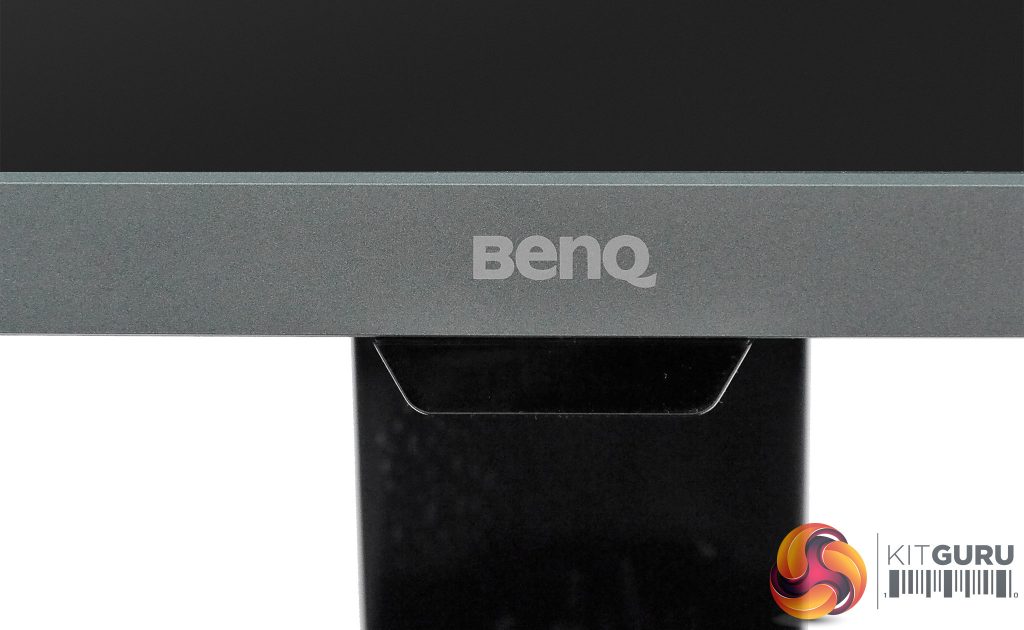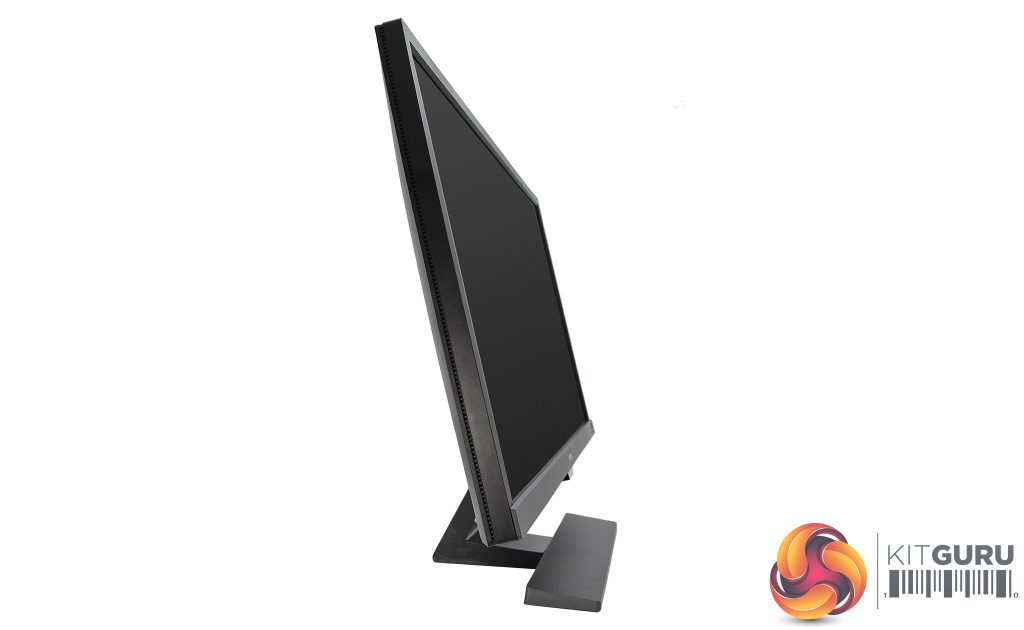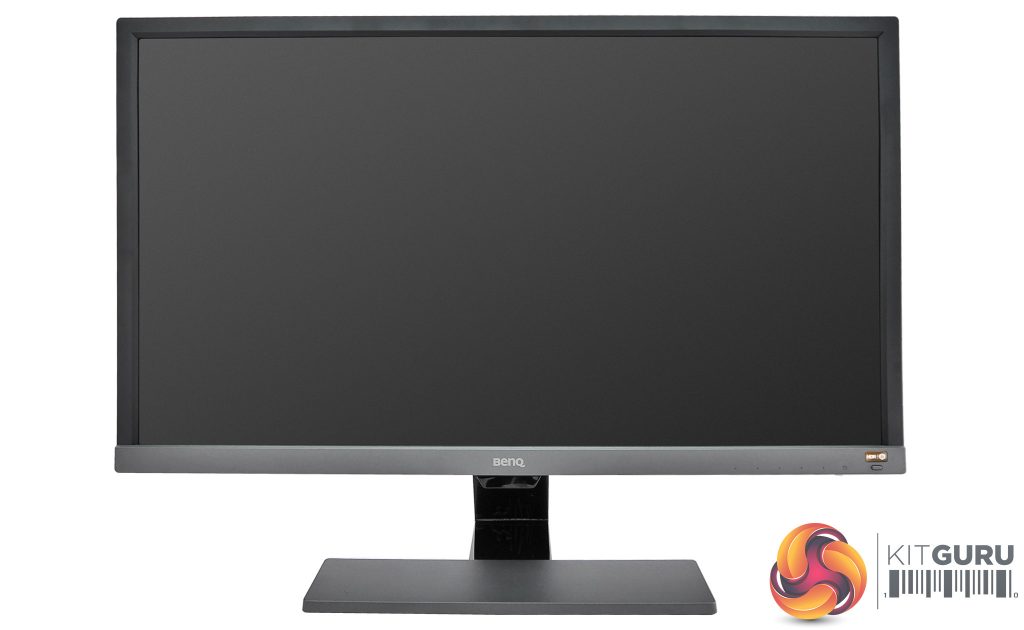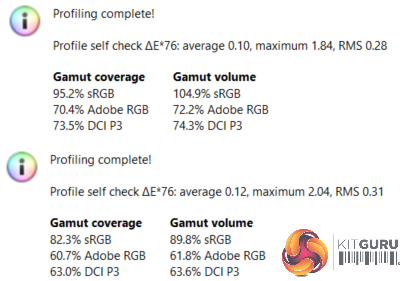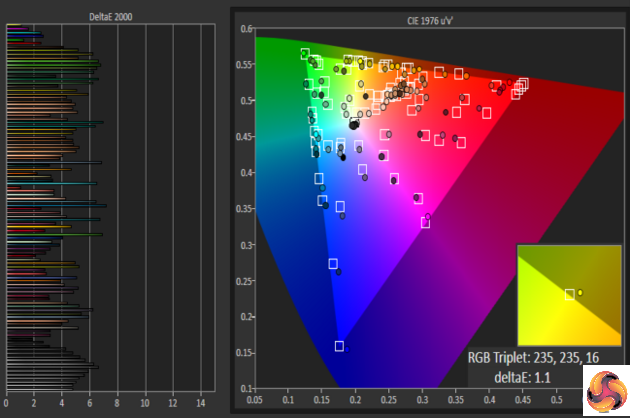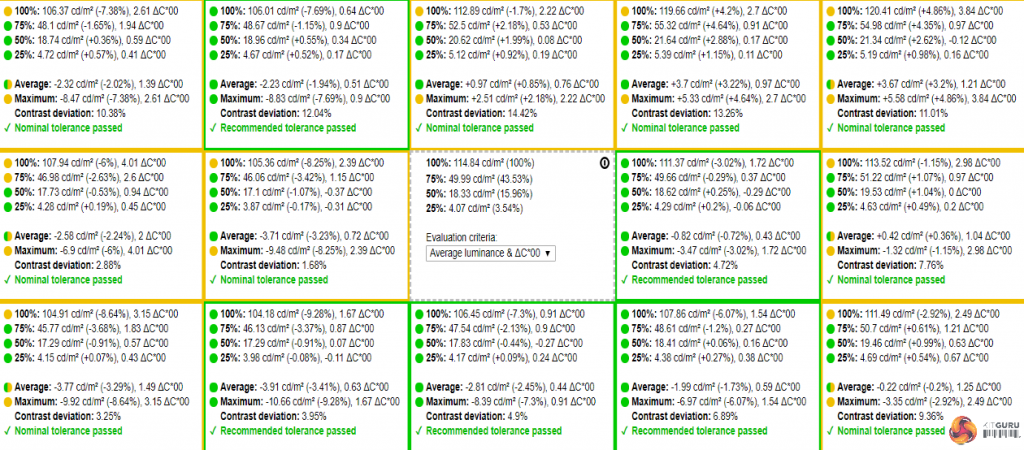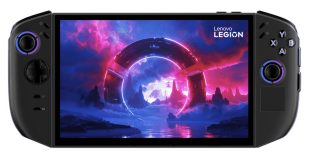BenQ EL2870U Power Consumption and Thermal Performance
With great (numbers of) pixels comes great power consumption, or so your friendly neighbourhood geek might inform you. Mind you, BenQ’s 28” beasty doesn’t exactly guzzle your wall juice, as we measured a peak consumption of 36W in its M-Book preset, which at 262 cd/m2 (also known as nits) was the brightest available.
Switching to its ECO mode, the EL2870U demanded around 24W. In this setting it offers a default brightness of 152 nits, which is close to our calibration target of 120. Dropping brightness to its minimum of 24 nits practically halved the ECO result with a mere 12.5W of power being consumed, while it adheres to the usual 0.5W in standby.
Thanks to its limited maximum brightness, the BenQ EL2870U stayed relatively cool to the touch, and even when playing HDR content it never exceeded 29.5°C. There was also no unwanted whine or buzz from the display when active.
BenQ EL2870U Speakers
The audio produced by the EL2870U’s 2W speakers can best be described as… average. They produce a good level of volume; we measured 77dB at the monitor’s bezel, meaning that depending on your sitting position your ears will get around 72dB. However, while there are no particularly glaring flaws, there’s a sense that there are good speakers being muffled by wet tissue in this display’s chassis. They lack any sense of depth or soundstage, and bass is present but severely constrained.
As such we would be happy to use them for the odd YouTube video or casual game, but for those who are serious about their sound we would strongly recommend connecting a pair of decent external speakers or headphones.
Noise guide:
10dBA – Normal Breathing/Rustling Leaves
20-25dBA – Whisper
30dBA – High Quality Computer fan
40dBA – A Bubbling Brook, or a Refrigerator
50dBA – Normal Conversation
60dBA – Laughter
70dBA – Vacuum Cleaner or Hairdryer
80dBA – City Traffic or a Garbage Disposal
90dBA – Motorcycle or Lawnmower
100dBA – MP3 player at maximum output
110dBA – Orchestra
120dBA – Front row rock concert/Jet Engine
130dBA – Threshold of Pain
140dBA – Military Jet takeoff/Gunshot (close range)
160dBA – Instant Perforation of eardrum
BenQ EL2870U Image Quality Test Process
Initially we perform a general, visual assessment of the monitor on our test bench. This includes judging general performance under a variety of scenarios, and checking for panel issues such as banding or backlight bleed.
For more detailed and objective evaluation we use an Xrite i1 Display Pro with DisplayCAL and CalMAN Colour Checker software to assess the panel’s contrast performance, uniformity and image quality. Please keep in mind that these results should only be used as a guideline: not only is every panel different to some extent, but a number of additional factors can affect measurements such as environment temperature, display warm-up time, and many others.
Lastly, for panels with HDR compatibility or capability, we check both the black level, luminance capabilities and extended colour space which are the requirements of true high dynamic range content.
BenQ EL2870U Image Quality – SDR
We were pleasantly surprised to see that, out of the box, the EL2870U doesn’t suffer as much of the washed-out effect that plagues many TN-type panels. However, as with most displays using this technology, viewing angles are limited. While they’re good as TN goes and in fact offer one of the better vertical performances we’ve seen from this panel type, on a display this large you can notice contrast and colour shift from one half to the next, even from a central viewing position. As such, we would hesitate to recommend the BenQ EL2870U for colour-critical work regardless of its other performance metrics.
Of the LCD-type panel technologies, IPS (also known as PLS in the case of Samsung, or confusingly, AHVA in the case of AU Optronics) tends to offer the strongest viewing angles, with the best VA panels performing slightly worse, and TN generally taking a very distant last place.
As with most monitors, the first thing you’ll need to do after turning on the EL2870U is reducing its brightness, unless perhaps your office is in the desert or you like having your eyeballs seared. Out of the box on the default Standard preset brightness is set to 80 which results in around 220 nits. Strangely, the sRGB preset has brightness set at its maximum, which gives 240 nits; we would recommend taking the brightness slider down to 48, which comes as close as possible to our preferred calibration target of 120 nits.
Only the Rec. 709 preset has a more modest luminance level at 78 nits, though that’s taking things a little far to the other side for our liking, resulting in a somewhat dull presentation. Speaking of dull but on a positive note, BenQ has opted for a matt AG (anti-glare) coating that diffuses reflections fairly effectively without causing visible grain and, as already mentioned, the bezels feature a similar finish so distracting reflections are kept to a minimum.
The good news continues with out-of-the-box colours, which are strong and punchy, especially for a TN monitor. Unfortunately the same cannot be said for black level, again a common failing of TN-based displays. For the deepest blacks VA panels rule the roost, generally followed by IPS and with TN again in last place. On the flip-side, the EL2870U will show you every last bit of shadow detail, meaning you won’t miss any subtle touches in murky games or movies.
Getting to artefacts and backlighting, our EL2870U’s panel gave a very even impression with no noticeable backlight bleed and minimal mura. There was only one obvious blemish on the right hand side of the screen, which was a darker spot against a lit background, but you would not even see this with the lights turned on and it was not visible in most content.
When it came to objective testing, BenQ’s EL2870U put in a somewhat middling performance. Due to an elevated black level of 0.18, contrast on our 120 nits sRGB preset came in at a fairly unimpressive 633:1, and that went up to a mere 645:1 in the HDR preset. With some TN panels, like that found in the Acer Predator XB241H managing 1000:1 or more, this result is disappointing, to say the least – especially on a monitor that bills itself as an entertainment display.
Mind you, with a little elbow grease we got this closer to 800:1, but this required messing with various settings (easiest in the User preset where all settings are available), which is hardly ideal and still not exactly an impressive result.
Colour performance was also a little underwhelming. sRGB coverage measured 95 percent, which is just about close enough to 100 with margin of error taken into account that we’ll give the EL2870U a pass here, but accuracy was further from the mark, with DeltaE (dE) 2000 figures of 4.5 average and a maximum of 7.2. Again, hardly ideal for colour-critical work; as a reference, lower dE deviations are better, with figures below dE3 tending to be indistinguishable to the untrained eye, while below 1 is as near to perfect as makes no visible difference.
Remaining results were decent but not great: gamma of 2.6 was a little on the high side compared to the 2.2 monitor display ideal, while the default colour temperature of 6285 was a tad on the low side considering the 6500K standard (the value matching ‘daylight’). Last if not least, uniformity followed this same performance curve, with a maximum deviation of 14 percent near the top centre.
 KitGuru KitGuru.net – Tech News | Hardware News | Hardware Reviews | IOS | Mobile | Gaming | Graphics Cards
KitGuru KitGuru.net – Tech News | Hardware News | Hardware Reviews | IOS | Mobile | Gaming | Graphics Cards


